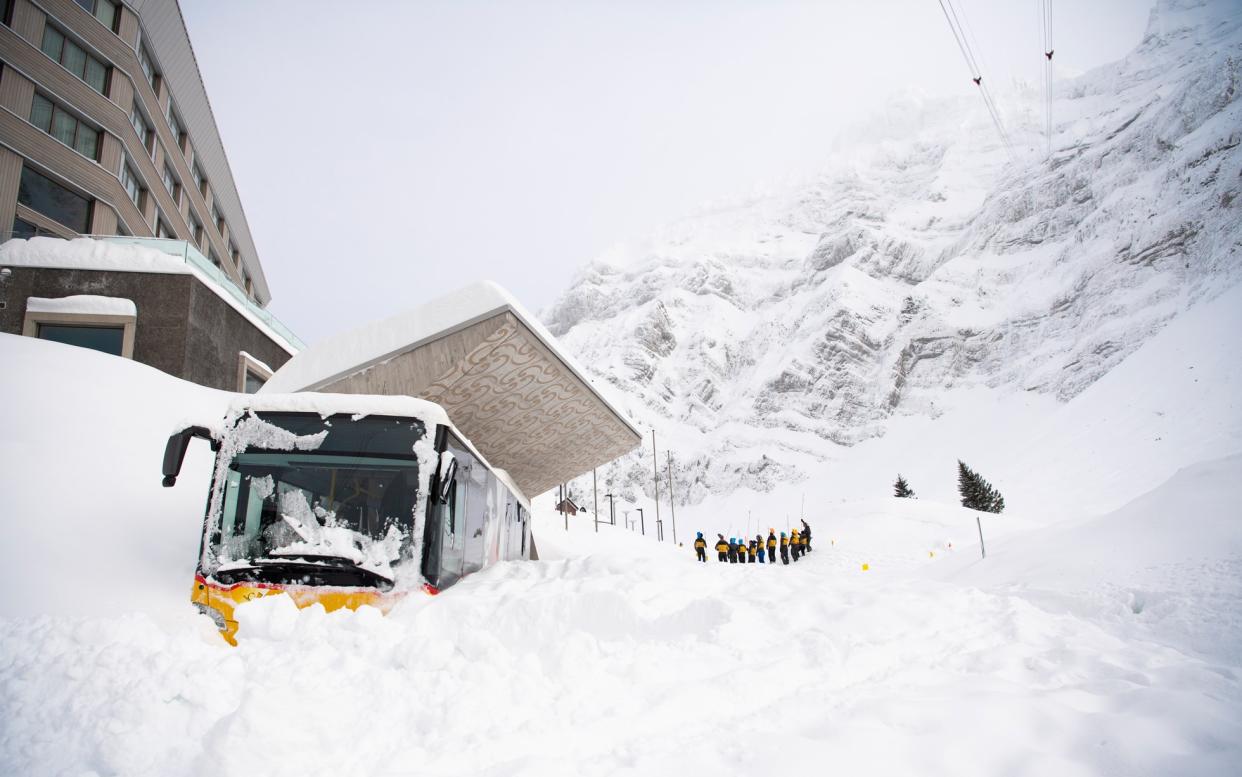Thousands stranded in Swiss ski resorts as extreme weather continues to wreak havoc in the Alps

Extreme weather in the Alps continues to make headlines as the massive snow storms that have been battering parts of Austria for the past week move westward into Switzerland. In the past 24 hours the avalanche risk in large parts of north and eastern Switzerland has been set at the highest level and the number of fatalities continues to rise.
The Swiss ski resort of Davos is the latest in a growing list of Alpine destinations to be affected. The resort has been cut off, with visitors and locals stranded, after heavy snowfall caused trees to collapse over the railway tracks and increasing avalanche danger forced roads to close.
The news comes a week ahead of the World Economic Forum, which sees political leaders, economists and entrepreneurs from around the global heading to the resort for the annual summit.
Davos received over half a metre of new snow just yesterday, following a week of heavy storms. Towards the summit snow depths are now over 260cm, while in the town it’s 138cm deep.
Yesterday two members of the mountain safety crew, who were trying to set up explosives for a controlled avalanche, were hit by a natural slide in the Valais region, home to popular resorts such as Verbier, Saas Fee, Zermatt and Crans Montana. One of the men died while the other was able to dig himself out of the snow, according to local reports.

This morning a video on YouTube showed a giant avalanche in Davos racing towards the road before fully submerging cars and chalets.
Other resorts currently in lockdown due to safety concerns include Klosters, Grindelwald, Engelberg, Andermatt and Disentis.
The national rail service SBB has had to halt all services to the affected areas. In the lesser-known town of Disentis, which neighbours Andermatt, local officials reported that over 2,000 residents and ‘several hundred’ tourists are currently stuck in the resort due to the closed roads and railway.
The head of the town’s local government, Robert Cajacob, said the situation was ‘stable’ but ‘problematic.’
The Swiss Federal Institute for Forest, Snow and Landscape Research warned that areas above 1,800m were most at risk of ‘large or extremely large’ avalanches due to the unstable snow conditions.
Last Thursday an avalanche crashed into a hotel restaurant, injuring three people, in the Schwägalp area in the north-east of the country. The 300 metre-wide slab buried 25 cars and forced its way through the windows of the Hotel Säntis.

Reports suggest that train lines and roads are slowly being reopened today as the snow eases. However, French authorities are warning of a high avalanche risk in the Haute-Savoie region, home to resorts such as such as Courchevel, Méribel and Val Thorens, and which borders Switzerland.
While resorts in France haven’t seen as much snowfall as their Swiss and Austrian neighbours, avalanche expert Henry Schniewind explains the risk there now comes from skiers ‘remote triggering’ avalanches.
He says: ‘Remote triggering means you can be on a low-angle slope of 20 degrees or less and trigger an avalanche on steeper slopes that are 50m, 100m or 300m above you. In many places there’s a weak layer sitting on top of a hard layer, now with fresh snow on it. This is a textbook example of the most susceptible type of scenario for triggering big slabs.’

The forecast does look brighter as the storms are set to ease over the next 24 hours. ‘The current overall situation in the Alps for holidaymakers is positive – there’s good snow conditions in the northern and western Alps with weather set to stabilise during the next few days,’ said Schniewind.
Advice to people visiting the Alps over the next week is to check the daily reports and bulletins produced by the resort and to avoid off-piste areas unless under the supervision of a local guide while the avalanche risk reamins high.


